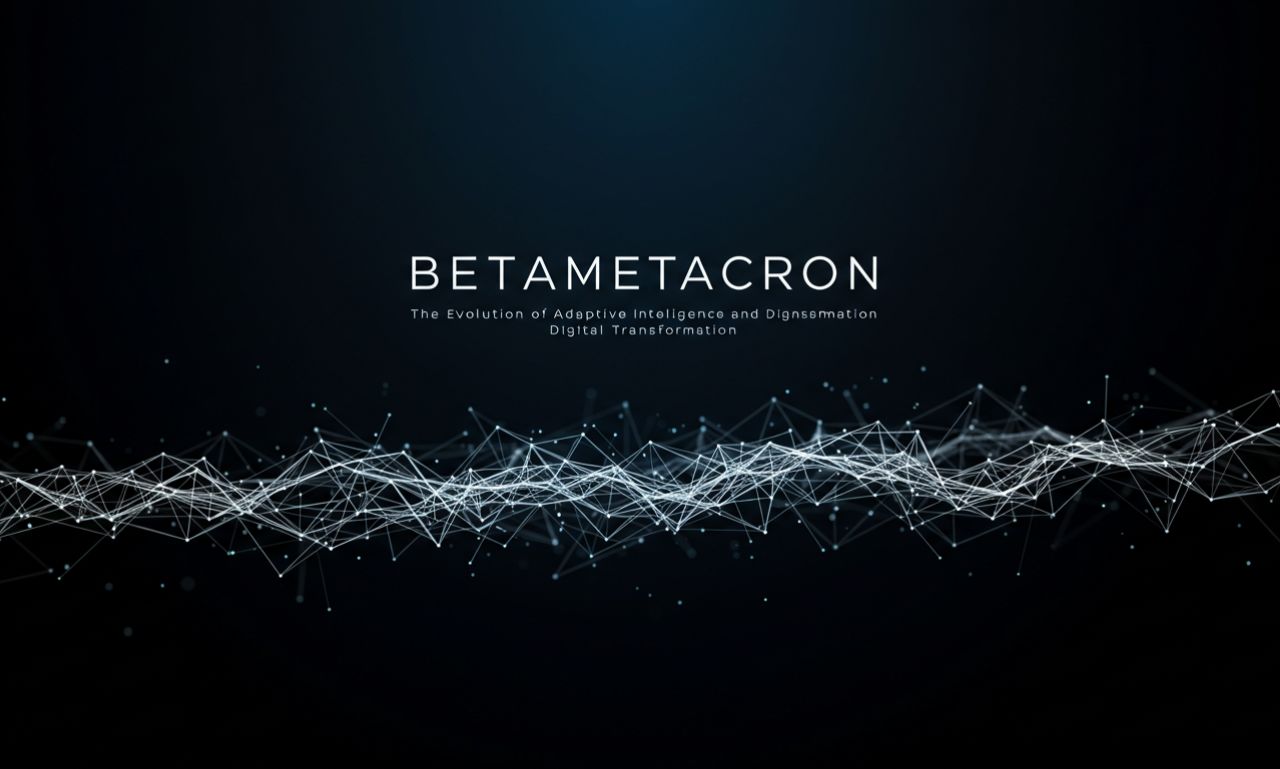In the ever-changing landscape of digital innovation, few terms capture the spirit of transformation quite like Betametacron. Emerging from the fusion of advanced computing, self-learning systems, and next-generation algorithms, Betametacron represents the convergence of meta-intelligence and adaptive synchronization. It is not just a word but a philosophy of how modern technology evolves — fluidly, intelligently, and beyond traditional boundaries.
This article explores what Betametacron means, its origins, technological significance, applications, and how it symbolizes the next phase of human and digital co-evolution.
Understanding Betametacron
At its core, Betametacron can be interpreted as a hybrid concept combining three powerful ideas:
-
Beta – representing evolution, testing, and the continuous cycle of improvement.
-
Meta – referring to higher-order understanding, self-reflection, and interconnected intelligence.
-
Cron – derived from “chronos,” the Greek word for time, symbolizing progression and transformation.
Thus, Bet ametacron embodies “the continuous evolution of higher-order systems over time.” It reflects the idea that intelligence, whether artificial or human, evolves through recursive self-improvement and adaptive synchronization with its environment.
The Origin and Philosophy
The philosophy of Beta metacron stems from the belief that intelligence is not static — it grows through dynamic feedback and systemic balance. In a digital context, this means systems that can learn, reflect, and adapt not just based on data but through self-understanding.
Beta metacron represents:
-
Transformation through feedback — systems evolving by learning from their own patterns.
-
Meta-awareness — the ability to analyze and optimize internal operations.
-
Temporal adaptation — evolving seamlessly with changing contexts and time.
This philosophical foundation makes Betametacron relevant across multiple disciplines — from artificial intelligence to sociology, cognitive science, and even environmental sustainability.
The Technological Dimension
In modern technology, Betametacron can be viewed as a framework for adaptive and intelligent systems that continuously evolve. It stands at the intersection of AI, data science, and automation, forming the basis for technologies that learn autonomously and optimize themselves in real-time.
1. Betametacron and Artificial Intelligence
AI models inspired by Betametacron thinking are capable of self-improvement without constant human oversight. They learn not only from data inputs but also from their own outputs — a form of recursive evolution that mimics human learning.
2. Betametacron in Cloud and Quantum Computing
In distributed computing systems, Betametacron symbolizes synchronized intelligence — multiple systems operating in parallel yet continuously adjusting their performance based on feedback loops.
In quantum computing, Betametacron represents the merging of probabilistic logic and deterministic control, creating a balance between uncertainty and precision.
3. Betametacron and Cybernetic Design
In cybernetics, Beta metacron describes the integration of human intuition with machine precision — systems that can anticipate needs, adjust behaviors, and optimize processes holistically.
Betametacron in Digital Ecosystems
1. Adaptive Systems
Digital ecosystems designed around Beta metacron principles are self-regulating and responsive. For instance, smart cities, autonomous vehicles, and predictive healthcare systems rely on adaptive models that learn from changing inputs.
2. Meta-Connectivity
In a hyperconnected world, Betametacron refers to meta-connectivity — the deep, intelligent linkage of data, people, and machines to form fluid, evolving networks.
3. Continuous Evolution
Unlike static technologies, Betametacron-based systems evolve continuously. They do not wait for updates; they become the update — redefining the cycle of innovation.
The Science Behind Betametacron
Betametacron is rooted in the principles of complex adaptive systems (CAS), where multiple independent elements interact dynamically to form intelligent outcomes. This concept has parallels in:
-
Neuroscience: The human brain evolves through feedback and adaptation — much like Beta metacron systems.
-
Genetics: Evolutionary algorithms adapt over generations, simulating Beta metacron’s temporal transformation.
-
Physics: Quantum systems exhibit superposition and entanglement — mechanisms that reflect Betametacron’s synchronized intelligence.
These analogies show that Beta metacron is not only a technological term but a scientific model for understanding adaptive complexity.
Betametacron and Human Evolution
The relationship between humans and technology has entered a new phase — one that Betametacron perfectly encapsulates. It reflects the moment when human intelligence and machine intelligence begin to co-evolve.
1. Cognitive Augmentation
Through Beta metacron, AI tools enhance human cognitive capacity — from data analysis to creativity. This co-evolution helps humans move from controlling machines to collaborating with them.
2. Emotional-AI Integration
Beta metacron-inspired AI doesn’t just process information; it understands context, tone, and emotion — bridging the gap between logic and empathy.
3. Ethical Synchronization
A core tenet of Beta metacron is responsible progress — evolving systems that remain aligned with ethical and human values.
Betametacron in the Business World
1. Data-Driven Decision Making
Companies leveraging Betametacron principles adopt adaptive analytics — systems that automatically refine their models based on new market data.
2. Smart Automation
In industries from manufacturing to logistics, Beta metacron represents automation that learns dynamically, optimizing itself through continuous input and feedback.
3. Predictive Innovation
By combining temporal learning (the cron aspect) with meta-intelligence, Beta metacron allows organizations to anticipate future patterns, enabling proactive innovation.
Betametacron in Art and Culture
Beyond science and technology, Beta metacron has started to influence digital art, storytelling, and design. It symbolizes the blending of organic creativity with algorithmic precision.
1. Digital Art
Artists inspired by Beta metacron use generative algorithms that evolve their work over time — creating living, breathing art forms that never stay static.
2. Music and Sound Design
In experimental music, Beta metacron reflects compositions that adapt to the listener’s environment, blending AI composition with human emotion.
3. Narrative Design
Writers and filmmakers use Beta metacron to represent futuristic societies where technology and consciousness merge — a metaphor for harmony between machine logic and human spirit.
The Ethical and Philosophical Implications
1. Conscious Evolution
If systems become self-evolving, who guides their purpose? Beta metacron brings this question to the forefront — urging ethical alignment in AI design.
2. The Human Factor
As automation grows, Beta metacron reminds us that technology must amplify humanity, not replace it. It should evolve with us, not away from us.
3. The Balance of Control
True Betametacron systems balance freedom and structure — allowing for creativity within guided ethical parameters.
Future Applications
The future of Betametacron is vast and transformative. It is likely to influence major domains, including:
-
Healthcare: Personalized medicine that evolves in sync with genetic and behavioral data.
-
Education: Learning platforms that adapt to each student’s cognitive pattern.
-
Climate Science: Predictive ecosystems that monitor and respond to environmental changes in real-time.
-
Space Technology: Self-adaptive robotics for interplanetary exploration, adjusting to unknown environments.
In each case, Beta metacron represents systems that think, adapt, and grow — independently and intelligently.
The Symbolism of Betametacron
Visually and metaphorically, Beta metacron embodies motion, reflection, and time. It can be symbolized through:
-
The Möbius strip, representing infinite continuity.
-
The Spiral, signifying evolution and progression.
-
The Wave, symbolizing energy, transformation, and adaptive flow.
Each symbol reflects Beta metacron’s essence — a continuous, intelligent evolution across time.
Conclusion
As we stand at the edge of an era defined by artificial intelligence, automation, and interconnected systems, Beta metacron serves as a guiding principle — a vision of balance between progress and awareness.
It embodies the belief that evolution must be intelligent, ethical, and harmonious. Through Beta metacron, we glimpse a future where systems don’t just function — they understand, adapt, and grow with us.
In essence, Betametacron is not just the future of technology; it’s the philosophy of evolution itself — a continuous journey toward unity between intelligence, time, and consciousness.

